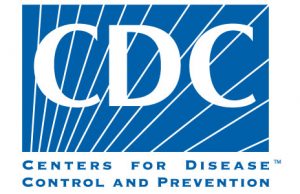A Woman’s Right to Choose: It’s Not Just About Abortion
By Asha Goldweber
When I went in to Kaiser to have my cervix biopsied for the 13th time, I cried before the procedure started. I knew what was coming— a lot of pain and intense cramping followed by more pain; having to wear pads and monitor shed blood clots; and to be unable to work, exercise, or have sex for up to a week thereafter. After all of that hell, my doctor explains that she is sure that they won’t find anything cancerous. Then why did you insist on executing this painful procedure that could affect my fertility?
I am an expert in understanding women’s health and choicelessness as I have declined yet submitted to over a dozen doctor ordered colposcopies. I’ve told at least three different doctors that I did not want to have a colposcopy to no avail. Colposcopy is a very subjective exam where the doctor looks at your cervix using a speculum, headlamp, and vinegar solution. The vinegar makes the atypical cells turn white and assists in identifying biopsy sites, sort of. These cells could be precancerous so then they biopsy them (excruciating) and test them (useless). No wonder I cried when my feet were in the stirrups. My doctor noted cervical scar tissue from past procedures. She asked if I wanted kids. If I said yes, could I avoid this procedure? Nope.
In a recent New York Times Op-ed, Why Are 2016 Candidates Ignoring Women’s Health? Nicholas Kristof reports, “It’s a tragedy that nearly a dozen women die a day of cervical cancer.” It is unfortunate because cervical cancer is preventable and the best prevention is regular testing to detect abnormalities early. However, many women don’t get screenings. More than half of women who get cervical cancer never or rarely had a Pap. While Kristof urges us to broaden the conversation about women’s health beyond abortion, he only focuses on issues with “solutions.” The conversation is actually more nuanced than that. That the NIH spends almost 3 times more on general clinical research than on women’s health demonstrates how far our national conversation still needs to come before we can even begin to prioritize women’s health and take action.
Cervical cancer was once the leading cause of cancer-related death for women. However, as the CDC notes, in the past 40 years, cases of cervical cancer and related deaths have decreased by more than 50%. This year, the American Cancer Society estimates that about 12 women will die from cervical cancer a day. Kristof noted this, but didn’t even mention heart disease — mistakenly thought of as a “man’s disease,” yet it is the number one killer of women (794 women a day). Compared to heart disease, the incidence of cervical cancer is low. Finding cervical cancer during a cervical screening is extremely rare. The vast majority of the “noise” leading up to cancer, the precancerous cells, falls into the “don’t know” category. That being said, if you have a family history of cancer, an aggressive approach to early detection, prevention, and treatment is necessary. So how regularly should women be screened and what tests are effective? Only recently have new health guidelines freed women from their annual Pap smear and subsequent unnecessary painful, and harmful medical procedures. The current screening recommendation for women 30-65 is for a Pap every 3 years (Pap and HPV combo test every 5 years). This shift in guidelines comes from sound medical research: Cervical cancer does not develop overnight. Screenings and HPV vaccinations prevent deaths from cervical cancer. Regularly submitting to sometimes painful and harmful procedures—pap smears, colposcopies or cervical exams and biopsies—is worth avoiding chemotherapy and cancer.
And yet, as I sit in the doctor’s office, I wonder “How did I get here?”. I go to the gynecologist for birth control. This is difficult enough. I submit to a Pap. It comes back abnormal with atypical squamous cells of undetermined significance. This is the most common abnormal finding. It does not mean much. It means we don’t know. It really is a false positive. Many things including changes in the body, sex, HPV, can cause abnormalities in cervical cells. Most HPV infections, even high-risk types, resolve themselves. You will be “advised” to have the abnormal cells removed anyway, just in case.
I test positive for HPV. So do 1 in 4 women. Of the more than 100 types of HPV, 13 are cancer causing, and two of these types cause 70% of precancerous cervical lesions and cervical cancers. Excessive screening procedures and overtreatment for cervical cancer, are unnecessary, costly, painful, and risk reproductive problems. Many of my female friends will disagree. They will want their doctor to be thorough, to avoid any risk, to avoid cancer. And they should. Screening and early treatment has been associated with notable reductions in cervical cancer deaths. For most, taking care of your health means being proactive when it comes to prevention and early intervention. Seeing a doctor and doing something (rather than nothing) can be empowering. For some, colposcopies and cervical biopsies are on par with a pap smear—not so painful. This has not been my experience.
I want doctors to allow women to say “no.” It is my responsibility to stand up for myself when I experience more harm than help. Researching and treating women’s health is an imperfect science—what a doctor views as a necessary treatment today may change in the future. Given the rarity of cervical cancer, the liberal and frequent use of colopscopies and cervical biopsies—which are now viewed as something to be done less frequently—and my painful history, going forward, I’ll take the risk. I want to make the choice.
 Asha Goldweber is a yoga and meditation teacher, writer, and research scientist. She is an expert in understanding women’s health and choicelessness as she has declined yet submitted to over a dozen doctor ordered colposcopies.
Asha Goldweber is a yoga and meditation teacher, writer, and research scientist. She is an expert in understanding women’s health and choicelessness as she has declined yet submitted to over a dozen doctor ordered colposcopies.




0 comments